We’ve written before about the importance of loyalty programs to extend the guest experience outside your physical location. An essential component of designing a successful loyalty program is knowing who your guests are and what they prefer. While many already have a good sense of their clientele, having quantitative information may help to plan for the future. In this article, we look at the preferences and communications channels popular with three key demographics: Boomers, Millennials, and Generation Z (Zoomers). (Generation analytics from Pew Research, United States Census Bureau, Datassentials, and Sprout Social).
The first large demographic are Boomers. The United States Census Bureau defines Boomers as those born between 1946 and 1964. As shown below, the Boomers are the largest of the recent generational groups. They are generally near, or past retirement age and have a greater amount of disposable income on average.
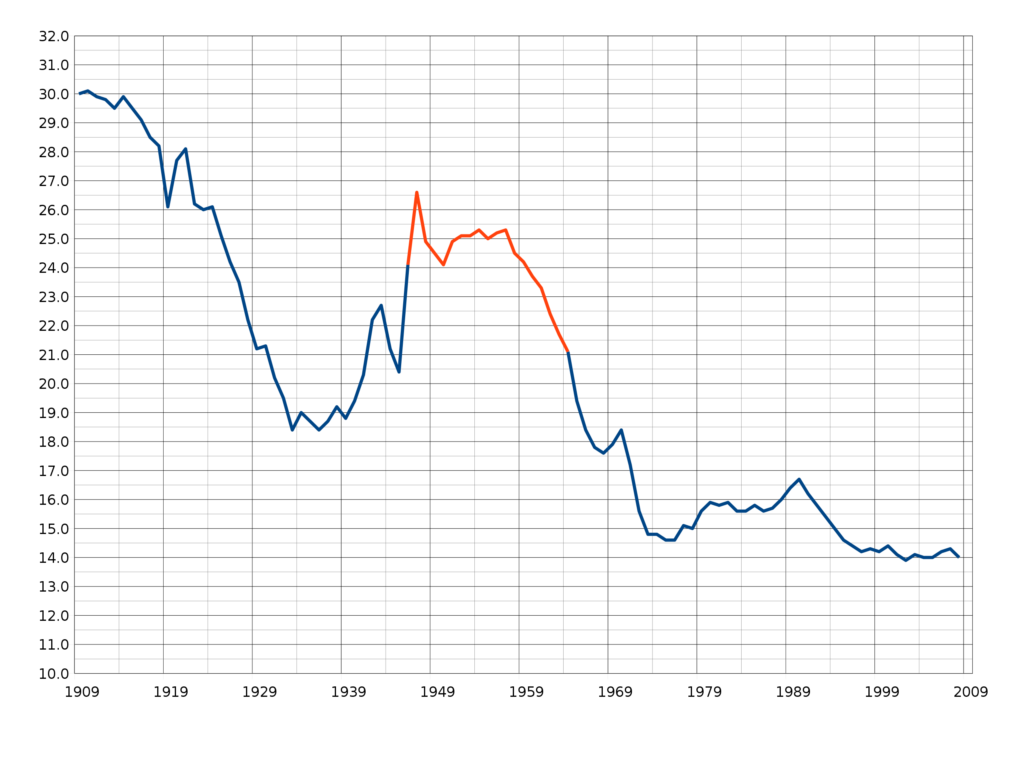
Prior to COVID-19, the Boomers were well served by the Food & Beverage industry. This generation tends to be brand conscious and loyal and, despite perception, has vigorously embraced the take-out and delivery service model, even before the COVID-19 crisis. They certainly aren’t as wired as the younger generations. In this 2018 study by Pew Research 78% of people between 65 and 74 were internet users.
They also have been slower to adopt Social Media. Facebook is by far the largest network for this generation, with 46% of them are on the platform. Comparatively, only 8% are on Instagram, and 7% on Twitter. They are more likely to use newspapers as a source of information and the least likely to turn to social media.

They respond well to messages focusing on value and quality and tend to frequent establishments with which they have a relationship. Quality and consistency rank as their top priority when considering a dining experience – 39% compared to 31% of the overall population. As an aging demographic, they are also in favor of Senior discounts and programs.
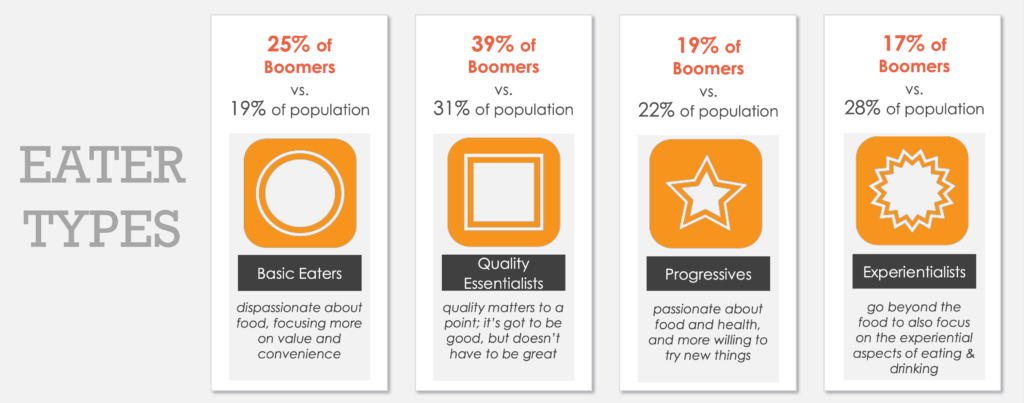
Image courtesy of Datassentials.
The second-largest demographic in the market are the Millennials. Referred to as an ‘echo’ generation, Millennials are the group born between 1980 and 1996. Millennials are distinctly different in their consumption habits from both Gen X and Boomers. A recent study of Millennial preferences showed that they are expecting to be able to engage with hospitality digitally. Conveniences such as being able to order in advance, ordering and paying via a mobile app, making reservations, or holding a place in queue digitally are appealing to a large percentage of Millennials.
In terms of dining, Millennials are similar to Boomers in that take-out and delivery are very popular choices. Unlike the prior generations, however, Millennials value the experience over consistency – 40% compared to 28% of the general population. They also dine-out more often, in an April 2019 study by Datassentials 69% of Millennials surveyed had eaten a meal out in the previous three days.
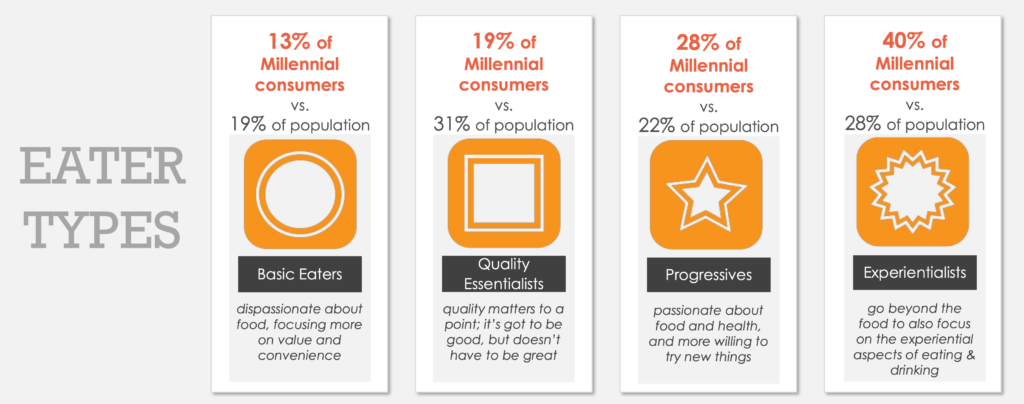
Image courtesy of Datassentials.
Millennials are more engaged on Social Media platforms and will use multiple media channels to discover food options.

Millennials are also much more likely to be looking for plant-based options, with 30% responding that they are looking to limit their consumption of animal-based protein (compared to 19% of Boomers).
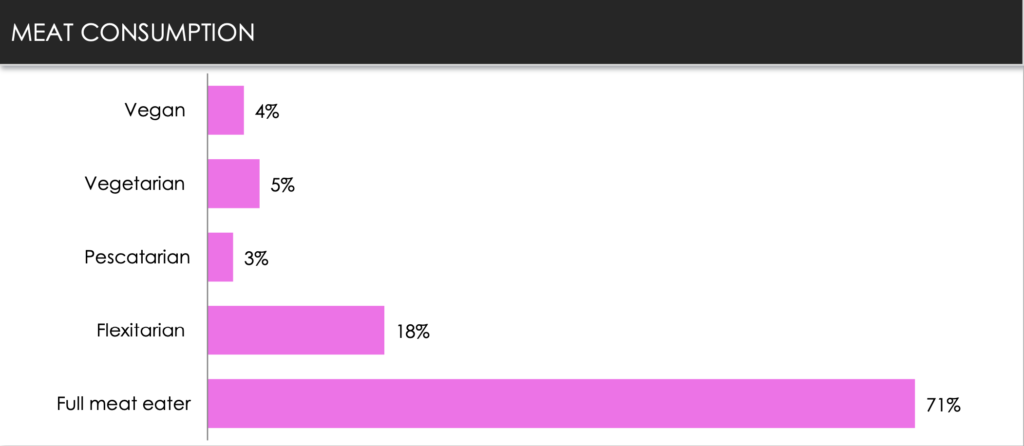
Image courtesy of Datassentials.
Generation Z, or Zoomers, born between 1997 and 2012, are often called digital natives. These consumers have grown up with technology and are even more engaged via those channels than Millennials. Like Millenials, Generation Z’s top preference in a dining experience is one that provides them with a unique experience, with 43% ranking the experience as more important than the quality or consistency of the meal. As this generation is at the beginning of their professional lives, they have less disposable income, still only 16% rank value as a priority for dining and entertainment choices.
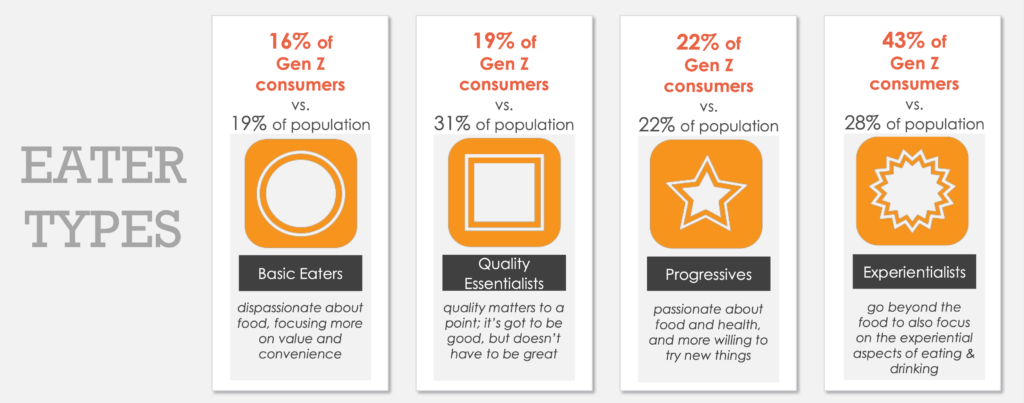
Image courtesy of Datassentials.
Like Millennials, Zoomers are also much more likely to be looking for vegetarian options, with 7% responding that they don’t eat meat at all and 31% looking to limit their intake of animal products.
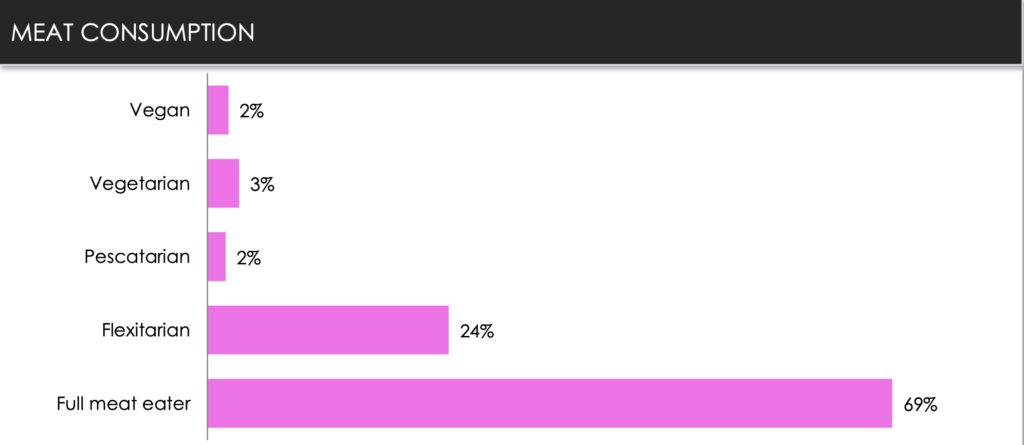
Image courtesy of Datassentials.
Zoomers are heavily engaged on Social Media, 55% use it to review options for dining. 76% use Facebook, 75% use Instagram, and 44% are active on Twitter.

While the COVID-19 crisis has undoubtedly changed guest behavior and preferences, many of these trends will continue into the future. A choice for take-out or delivery may be more pronounced, but the overall channels of engagement and the values for these demographics will remain consistent.



